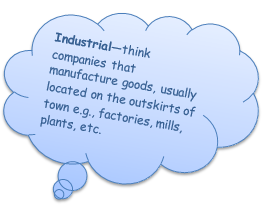-
Module 2.0 How to be Successful in this Course
-
Module 2.1 Introduction to Natural Gas
-
Module 2.2 The Natural Gas Industry in British Columbia
- Overview
- Learning Outcomes
- Natural Gas Science – The Simple Version
- Natural Gas Science – Chemistry
- Natural Gas Science – Physics
- Natural Gas Science – Units of Measurement
- Natural Gas Science – Geology
- Natural Gas Resources and Uses
- Oversight of the Natural Gas Industry
- Understanding Land Rights and Natural Gas
- Energy and the Future
-
Module 2.3 Upstream – Well Site Selection, Preparation and Drilling, Completion, Production, Water Recycling, and Reclamation
- Learning Outcomes
- The Upstream Sector – Extraction and Processing
- The Upstream Sector – Exploration and Site Selection
- The Upstream Sector – Preparation and Drilling
- The Upstream Sector – Completion
- The Upstream Sector – Production
- The Upstream Sector – Water Recycling
- The Upstream Sector – Reclamation
- Upstream Companies and Jobs in British Columbia – Companies
- Upstream Companies and Jobs in British Columbia – Industry Associations
- Upstream Companies and Jobs in British Columbia – Professional Associations
- New Vocabulary
-
Module 2.4 Midstream – Transportation, Processing, Refining
- Learning Outcomes
- The Midstream Sector
- The Midstream Sector – Processing Natural Gas
- The Midstream Sector – Liquefied Natural Gas
- The Midstream Sector – An Emerging Industry
- The Midstream Sector – Processing LNG
- The Midstream Sector – Proposed LNG Projects in British Columbia
- Transportation
- Midstream Companies and Jobs in British Columbia
-
Module 2.5 Downstream – Refining and Markets
-
Module 2.6 Health and Wellness in the Natural Gas Industry
-
Module 2.7 Safety
-
Module 2.8 Terminology and Communication
-
Module 2.9 Jobs and Careers
- Learning Outcomes
- Industry Outlook
- Technology is Changing Workforce and Skills
- Employment in the Natural Gas Industry
- Employment in the Natural Gas Industry – Types of Employment
- Employment in the Natural Gas Industry – Range of Jobs
- Employment in the Natural Gas Industry – High Demand Jobs and Occupations
- Occupational Education and Training
-
Module 3.0 How to be a Valued Employee
-
Module 3.1 Identifying Interests and Skills
-
Module 3.2 Looking for Employment in Natural Gas
-
Module 3.3 Applying for Employment in Natural Gas
The natural gas market (buying and selling) is a complex subject, one more appropriate to an entire course. In this module, we touch only on the very basics of the market:
- Who are the major consumers or users of natural gas?
- What is happening with the demand for natural gas?
- What affects the pricing of natural gas?
Consumers or Users
The three largest consumers of natural gas are:
- Residential users (households).
- Commercial and industrial businesses.
- Power generation companies.
Residential Users
Amongst residential users, the greatest demand for natural gas is as a heating source for our homes or households; in rural and remote areas where natural gas is unavailable, propane serves as a lower-cost heating fuel.
- About half of all homes in Canada and the U.S. use natural gas for heating.
- In Canada, 24% of natural gas used in Canada was for heating homes, based on NRCAN (Natural Resources Canada) statistics from 2016.
Visit https://www.nrcan.gc.ca/science-data/data-analysis/energy-data-analysis/energy-facts/natural-gas-facts/20067#L9 - The National Energy Board estimated that in 2012, over six million Canadian homeowners were using natural gas to heat their houses and their water.
Residential users also turn to natural gas as power source for a growing number of appliances such as ranges, cooktops, refrigerators, water heaters, washers and dryers, fireplaces, and outdoor barbeques.
Commercial and Industrial Users
Commercial and industrial users look to natural gas as a heat source for buildings, warehouses, distribution centres, retail centres, etc., as well as a fuel source to power machines, vehicles, tools, and other things.


- In comparison to coal, natural gas burning furnaces are easier and less expensive to regulate and control.
- Remember, natural gas is the cleanest burning fossil fuel, making it a more environmentally friendly
option.
Power Generation Users
Power plants are the fastest growing users of natural gas, driven largely by producers seeking cleaner, more environmentally friendly fuel sources since natural gas-powered plants are more environmentally friendly than coal or oil. Some natural gas power plants operate year-round, while others are seasonal.
Demand
Demand from all users, for natural gas and liquid natural gas is growing significantly in Canada and worldwide.
- Demand from power generation companies has risen faster than demand from residential and commercial/industrial users, although they are definitely intertwined.
- The single largest factor affecting demand for natural gas is the temperature outdoors.
- In colder climates, natural gas is used for heating
- In warmer climates, natural gas is frequently used to power air conditioners.
Fluctuations in seasonal temperatures can make it difficult for natural gas producers to match supply to demand.
- A milder (or colder) than usual season, may result in lower (or higher) than anticipated demand for natural gas
- Consequently, producers of natural gas may find themselves with a surplus (or shortage) of natural gas.
Pricing
The price of natural gas varies, much in the same way that demand for natural gas varies. Price differences are influenced by factors such as:
- Expected and unforeseen changes in demand and supply
- Unusual weather
- Pipeline capacity
- Location
- The price of alternative fuel sources (e.g., coal and oil)
- Geopolitical events.
Shortages of natural gas will (all other things being equal) likely generate price increases, while an oversupply of gas will (all other things being equal) tend to decrease prices.
In North America, prices for natural gas are driven primarily by the relationship between domestic supply and demand. In other words, the supply of natural gas from North American natural gas and oil fields, and the demand for natural gas from U.S. and Canadian consumers in the residential, commercial/industrial, and power generation sectors.

Henry Hub Price https://en.wikipedia.org/wiki/Henry_Hub
The standard for natural gas prices is based on what is referred to as the Henry Hub price. The Henry Hub is a location along the U.S. Gulf Coast near Erath, Louisiana, where 13 interconnected pipelines from across North America converge.
The Henry Hub price is determined by a calculation of the average price of natural gas bought and sold at Henry Hub (the location where the 13 pipelines converge) and which are traded on the New York Mercantile Exchange (NYMEX).
For More Information About Pricing
Check out the following websites if you want to know more about natural gas prices.

Website 1: NASDAQ Composite Index http://www.nasdaq.com/markets/natural-gas.aspx

Website 2: Alberta Natural Gas Prices http://www.gasalberta.com/pricing-market.htm

Website 3: Intercontinental Natural Gas Exchange (ICE NGX) https://www.theice.com/ngx/overview

Website 4: US Energy Information Administration FAQ https://www.eia.gov/tools/faqs/faq.cfm?id=43&t=8
Learning Activity 2: What Did You Learn About the Processes in the Downstream Sector?
Instructions
- Review the material in this section of the module
- Pair up with the student you worked with on Learning Activity 1
- Take out the list you made in Learning Activity 1 and compare what you knew before with what you know now
- Did you learn more about what you thought you knew?
- How accurate was your understanding of what you thought you knew?
- Now write down three new things that you learned from the websites and material in the module.
- Share your learning with a classmate or as part of a class discussion.
Practical Activity 1:
Modeling Key Concepts in the Upstream, Midstream, and Downstream Natural Gas Industry
Time permitting, your instructor will ask you to work on Practical Activity 1 in APPENDIX A. This exercise will allow you and your classmates to demonstration your understanding of the key concepts within the upstream, midstream, and downstream sectors of the natural gas industry.
Companies
Below is a sample list of companies which operate in the downstream natural gas sector in British Columbia.







Figure 4: Building Trust: Canadian LNG Developers & First Nations, 2020
To find additional companies, go back to Module 2.3 and review the company lists shown on websites of the major industry associations. The websites provide a very comprehensive listing of small, medium, and large companies operating in the oil and natural gas industries in British Columbia and across Canada. Use these sites to identify downstream companies that you are interested in working for.
| Did you know?
There are 12, 000 self-identified Indigenous workers in Canada’s oil and gas industry, according to the National Coalition of Chiefs (NCC). NCC is a community of pro-development First Nation Chiefs and Métis leaders that advocate for the development of oil and gas resources in their communities. Energy development in and near their communities—many of which are in rural and remote areas where few other economic drivers exist—provides much needed jobs and opportunities that help Indigenous members thrive and help defeat on-reserve poverty. |
Occupations and Jobs
The downstream sector offers jobs in a range of occupational areas. Some examples are listed below. Module 2.9 will provide more comprehensive information on careers in these occupations.
- Process Operation e.g., Petroleum, Gas, Chemical, Pipeline
- Transportation e.g., Truck Drivers, Marine Workers, Pilots
- Skilled Trades e.g., Millwrights, Electricians, Instrumentation Technicians, Pipefitters, Welders
- Engineering and Technology e.g., Petroleum, Chemical, Mechanical and Industrial Engineers, Technicians, and Technologists
- Health and Safety e.g., Coordinators, Trainers
- Sales and Marketing
- Communications e.g. Indigenous Consultation, Stakeholder Engagement, Rights-holder Engagement, Government Relations
- Environment
- Human Resources
- Purchasing

Website 5: Canadian Gas Association (CGA) http://www.cga.ca/suppliers-manufacturers/
CGA represents major gas distribution and transmission companies and appliance and equipment manufacturers in Canada.

Website 6: Canadian Energy Pipeline Association (CEPA) https://cepa.com/en/cepa-members/
CEPA represents firms in the transmission pipeline industry in Canada.
Learning Activity 3: Identifying Downstream Sector Employers of Interest
Instructions:
- Make a list of employers in the downstream sector of the natural gas industry that you may be interested in working for.
- Gather company names for your list by visiting websites 5 and 6.
- List the various distributors, transmission, and equipment supply firms operating in the downstream sector.
